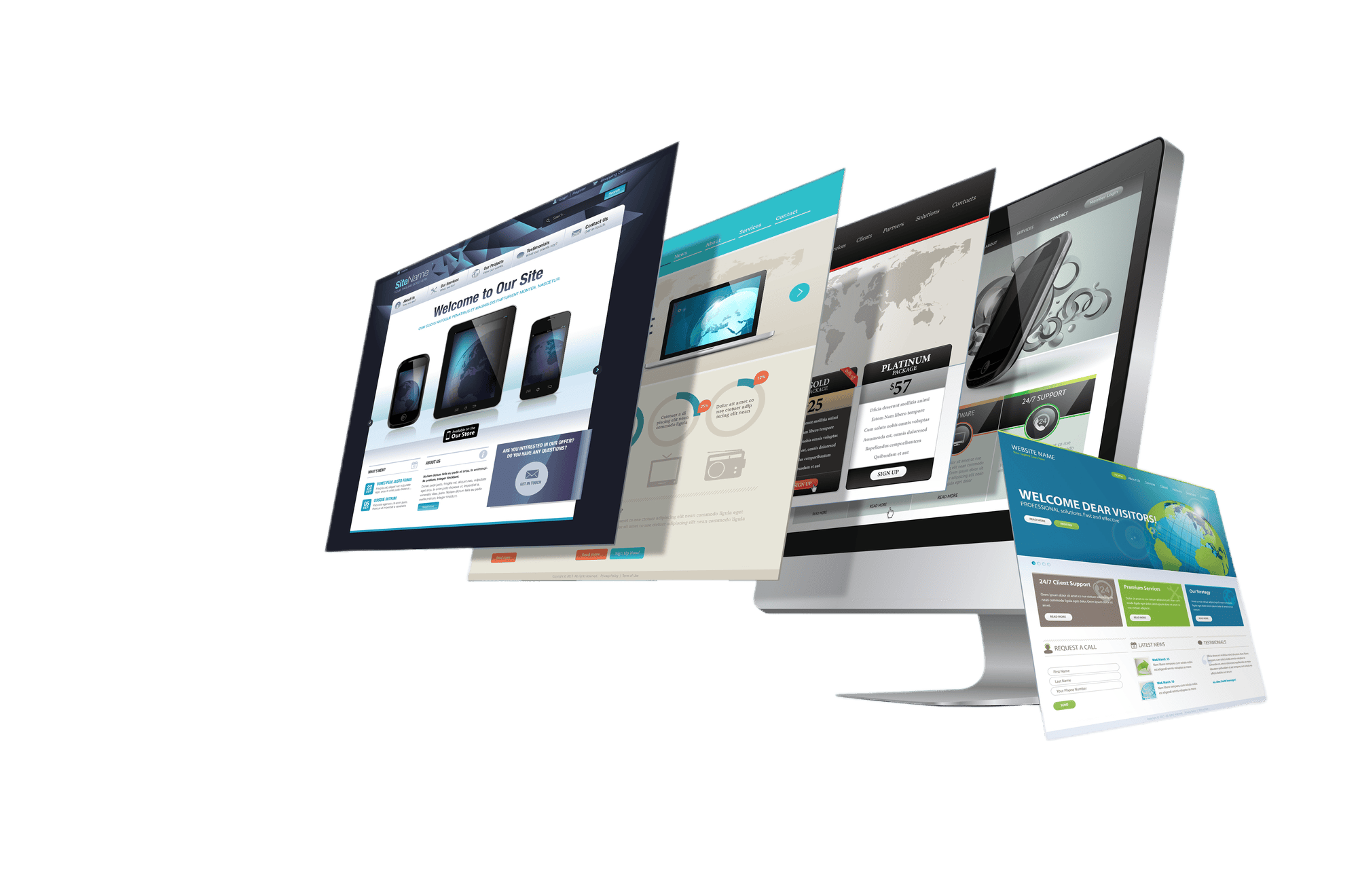Long-tail keywords are invaluable in creating an intentional Search Engine Optimization (SEO) strategy. When used correctly, they can serve as an instrumental tool in determining who your buyers are and the best way to take advantage of high-intent search traffic. Devising innovative and relevant keywords into website elements such as headings, descriptions, and content is crucial in drawing eyes to your page and staying on top of your game.
Long-tail keywords give you that unique edge that makes your business a prominent all-star and formidable contender in your industry. With that being said, we listed 15 reasons why long-tail keywords are important in amplifying your website’s growth and success!
Long Tail Keywords vs. Short Tail Keywords
Before we dive into the power of keywords, we must define the term and compare it to its counterpart, short-tail keywords. These two categories are the most common among the multitude of keyword varieties.
Short Tail Keywords:
These keywords are popular searches that consist of one to two words. If users are primarily searching for a general topic, they’ll most likely enter a shorter-tail query into the search bar and yield a wide range of results. An example of a short keyword is web design.
Long Tail Keywords:
Long keywords contain three to five or additional words that concentrate on a niche. When searching for more specific results, web users tend to type in a longer query (otherwise known as a long-tail keyword) to gain more relevant outcomes. They’re often less recognized and heavily searched but give more targeted results. A long-tail keyword example is a web design agency in North Carolina.
While SEO novices might be tempted to only incorporate short-tail keywords into their text since they garner a higher search volume, this can work against their website outreach goals. Comparatively, long-tail keywords that are more specific to your business can shine, which leads into our following points:
15 Reasons to Use Long Tail Keywords
1. They’re Less Competitive
They have significantly low competition, making them easier to rank. While a broad Google search yields numerous hits, that short term you typed in can cause your website to disappear underneath hundreds of thousands of monthly global searches. The probability that your website will be listed in the first search engine results page is very slim. Meanwhile, longer keywords are more optimized and catered toward your particular products and services.
Short keywords might be easier to include on the page when writing content but cost more in the long-run since you’re going toe-to-toe with large companies. Long-tail keywords hold massive opportunities to draw high-quality traffic to your site. Search Engine Land reported that 70% of all web searches come from long-tail keywords, another study conducted by Moz reveals that more than 54% of search queries are at least 3 words long, so you shouldn’t sleep on longer terms.
2. They Offer Higher Conversion Rates
People who place long-tail keywords in the search box have a better idea of what they want as opposed to short keyword users, who often use short-tail terms in the early browsing stages, perhaps researching an item before buying.
Going back to our previous example, there’s a vast difference between web and web design versus web design agency in North Carolina. There’s unique intent as you go further down the line, indicating that the user expects more detailed and updated content as the keyword grows. If you simply search web design, you’ll receive tons of results. These will include a mix of sponsored videos and blog posts, web design courses and DIY tutorials, corporate web builders, and non-local web designers.
If you search web design agency in North Carolina, you’ll notice your results shift to smaller-owned businesses, freelancers, or web design experts who work in your state. This indicates that you’re closer to deciding on what services you need depending on the search results.
Long-tail keyword searches have a click-through rate 3-5% higher than generic searches, according to Smart Insights. At this point, visitors are inclined to dwell on your page longer and make a faster purchasing decision, which is another reason why it’s beneficial to use long-tail keywords.
3. They Amplify Content Visibility
Demographics play a significant role whenever someone searches for a long-tail keyword. For instance, two users entering the same search term for contemporary art-deco furniture might view different results based on their location, gender, age, interests, and preferences. Long-tail keywords are dedicated and focused on optimizing your website for different categories of searchers because they’re more detailed.
4. They Create A Slam-Dunk in Profits And Diminish Costs
Long-tail keywords not only help businesses rank their content in organic Google searches, but they’re also key assets for advertisers running paid search ad campaigns. Bidding on long-tail keywords means the cost-per-click is less since there’s less competition. The goal is to discover a sustainable and reliable source of long-tail keywords that are compatible with your brand and niche.
5. They Help New Or Low-Authority Pages Rank Quickly
There are a select few giant industry players who’ve dominated the rankings arena. Google ranks web pages based on the following factors, quality, authority, and relevance, meaning these legacy corporations have a tight grip on high-competition keywords. You might’ve recently created your web page, so your newbie status pales in comparison to these authority heads, even with superb content. You can gain the upper hand by being more relevant to your target audience. Identifying long-tail keywords can be advantageous in creating highly relevant content that accurately answers search inquiries better than your leading competitors.
6. They Work Better In Conversation And Voice Search
The way we engage with searching things up is rapidly evolving. You now have people talking with or asking a question to search tools like Siri, Alexa, and Google Home. According to Search Engine Journal, 55% of millennials use voice search daily. When they interact with these platforms, they frequently use long-tail keyword phrases such as, “What are the best pizza places nearby?” and provide commands with clear intent like “compare the cost of this hair product from Target and Walmart.”
Searchers using voice queries are the type of long-keyword audience you want to cater your content to. High-intent users are adamant about having a particular service, so when they discover good content that matches their needs and answers their questions, it’s easier to persuade them to convert. To sum it up, long-tail keywords accurately match how real people search and their search habits. You’re more likely to say, “Best places to travel in the spring” when talking to your voice app rather than “travel.”
7. They’re Great For Personalization
Considering how descriptive long-tail keywords are, they’re integral in guiding the content you produce. Four or five words that carry identifiers such as gender, nationality, or geographical location are the building blocks for dynamic content, all while supporting the numerous categories and services your company offers. Long-tail keywords allow you to zero in on your content strategy, navigate your niche, and become a pro at contextual marketing.
8. They Make Sure Short-Tail Keywords Are In The Algorithm Too
What do we mean by this? Long-tail keywords aren’t meant to disqualify the short-term ones. Oftentimes, they’re like pieces of a puzzle; long-tail keywords already include the short keywords you hope to rank. This combo means that you can simultaneously monitor progress on both of your goals, which involve increasing your ranking for those main keywords, along with expanding your specific target ones. It’s a win-win situation that equals more organic traffic and sales!
9. They’re Easily Obtainable From Google Analytics
Keyword research for long-tail keywords isn’t as complicated and complex as some people make it out to be. Some of them come directly from your web analytics providers such as Google Analytics. Paired with Google Search Console, you can track the performances of your chosen long-tail keywords, monitoring the search volume and conversion rates. The data collected can be fundamental in determining the best ones to apply for your SEO game plan.
10. They Optimize Your Blog
To remain among the ranks, we suggest having a consistent blog with fresh and creative content that serves as a resource for your target audience. If you’re unsure on where to begin, you can have your long-tail keywords guide you! Your audience regularly comes to your blog because you’re an industry leader, therefore specific long-tail keywords indicate their needs and expectations. Besides offering invaluable insights into what your audience’s search preferences are, long-tail keywords conceptualize fantastic content to address some of their pain points and utilize key phrases. However, beware of over-optimization. You want your keywords to blend into the web content so they’re virtually unnoticeable and natural, they shouldn’t appear to be packed into every sentence of the text to the point where they drown out your subject matter.
11. They Boast More Targeted Intent
The three main types of search intent inquiries: informational, transactional, and navigational. As we mentioned previously, long-tail keywords are often used by users who know what they want and are ready to take action. If someone searches for “top resorts in the Bahamas prices” versus “Bahamas vacation,” it is clear which search phrase indicates that the person is closer to making a purchase. Long-tail keywords closely tie into transactional intent and empower you to gain highly relevant traffic and more assured buyers.
12. They Promise Lots Of Tail Topics
Although long-tail keywords are lifesavers, you can’t optimize all blog posts for the same term (i.e. professional web design), even if all the posts you write are about professional web design. There has to be some spice and variety. When you write various blog posts centered around one theme, you should use a whole number of long-tail variants of your main keyword. This also sparks a bunch of different topics you can tackle for your professional web design blog that speak to revamping and revolutionizing your clients’ sites. Long-tail keyword examples include professional web design strategies, professional web design tools, and professional web design tutorials. You can come up with a ton of long focus keywords through keyword research and a length check to make sure they aren’t too long.
13. They Make Creating Topic Clusters Easier
Expanding on our earlier benefit, long-tail keywords are where topic clusters come in. Topic clusters are groups of related content on the site that cover a broad subject area with individual articles. Topic clusters provide contextual support for all other web pages in the group. Web pages that boast long-tail variants that relate to a broad category are the foundation of a good topical cluster content strategy. This leads to building topical authority in your niche, creating a solidified SEO internal linking framework, and making it much easier for users and search engines to find your content.
14. They Ensure That The Content Can Be Shorter In Length
Because long-tail keywords have less competition, this means you can write shorter content to meet the user’s search intent. It’s common practice to see web pages that are no more than 1,000 words in length, which is easier to write than a web page that’s competing with short-tail keyword phrases and requires 2,000 to 4,000 words or more. This can save you time and stress.
15. They’ll Prepare You For The Trends Of Tomorrow
Long-tail keywords have adopted a more conversational tone and are the heart of the latest SEO strategies, including Google’s study on the intent behind the search. Voice assistants find long-tail keywords to be more favorable since they read off featured snippets, ultimately prioritizing results that host long-tail keywords in them. In other words, using long-tail keywords is integral for the future of your website and blog.
If you need keyword assistance or web design help, please check out our services or get in contact with us at faithwebdesigners.com.





